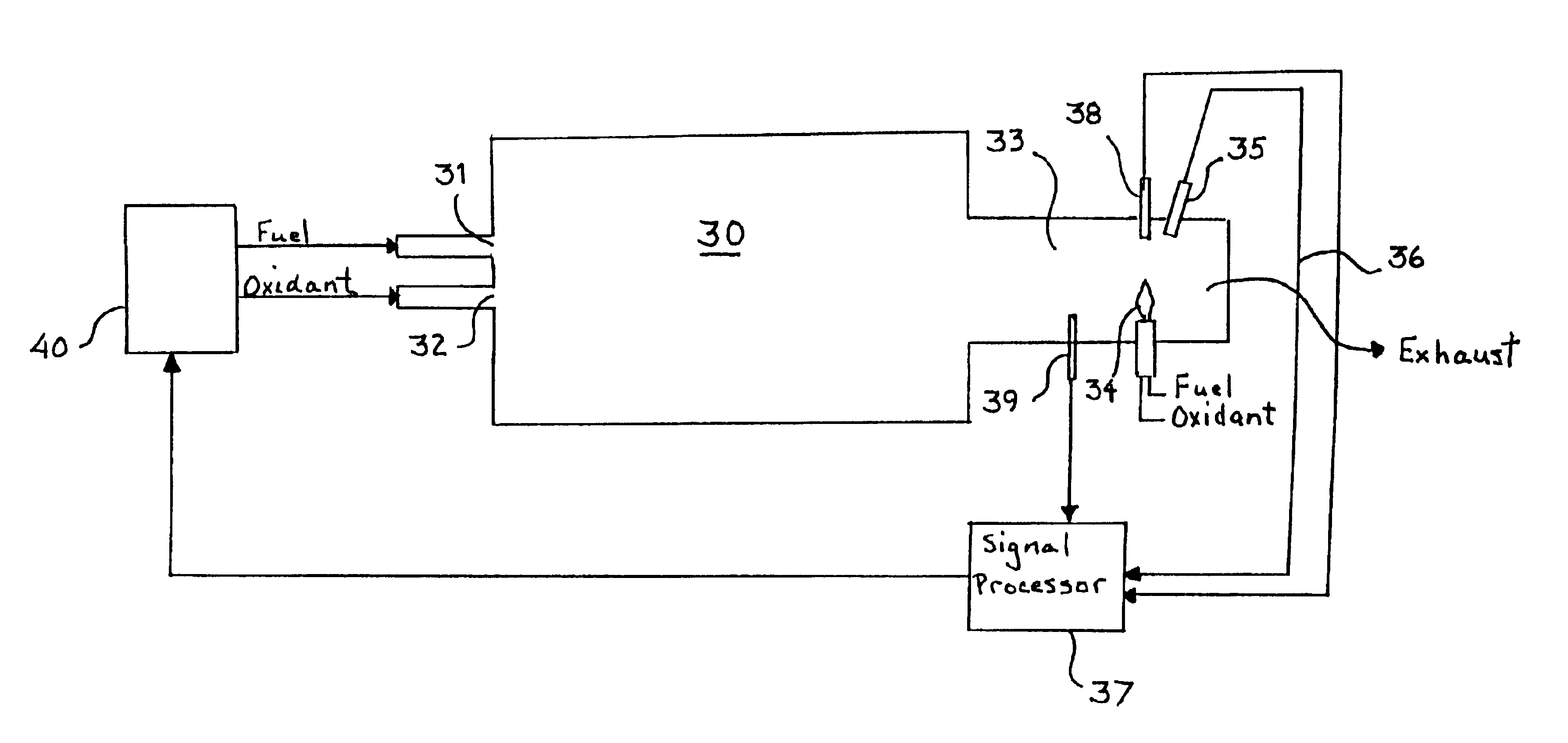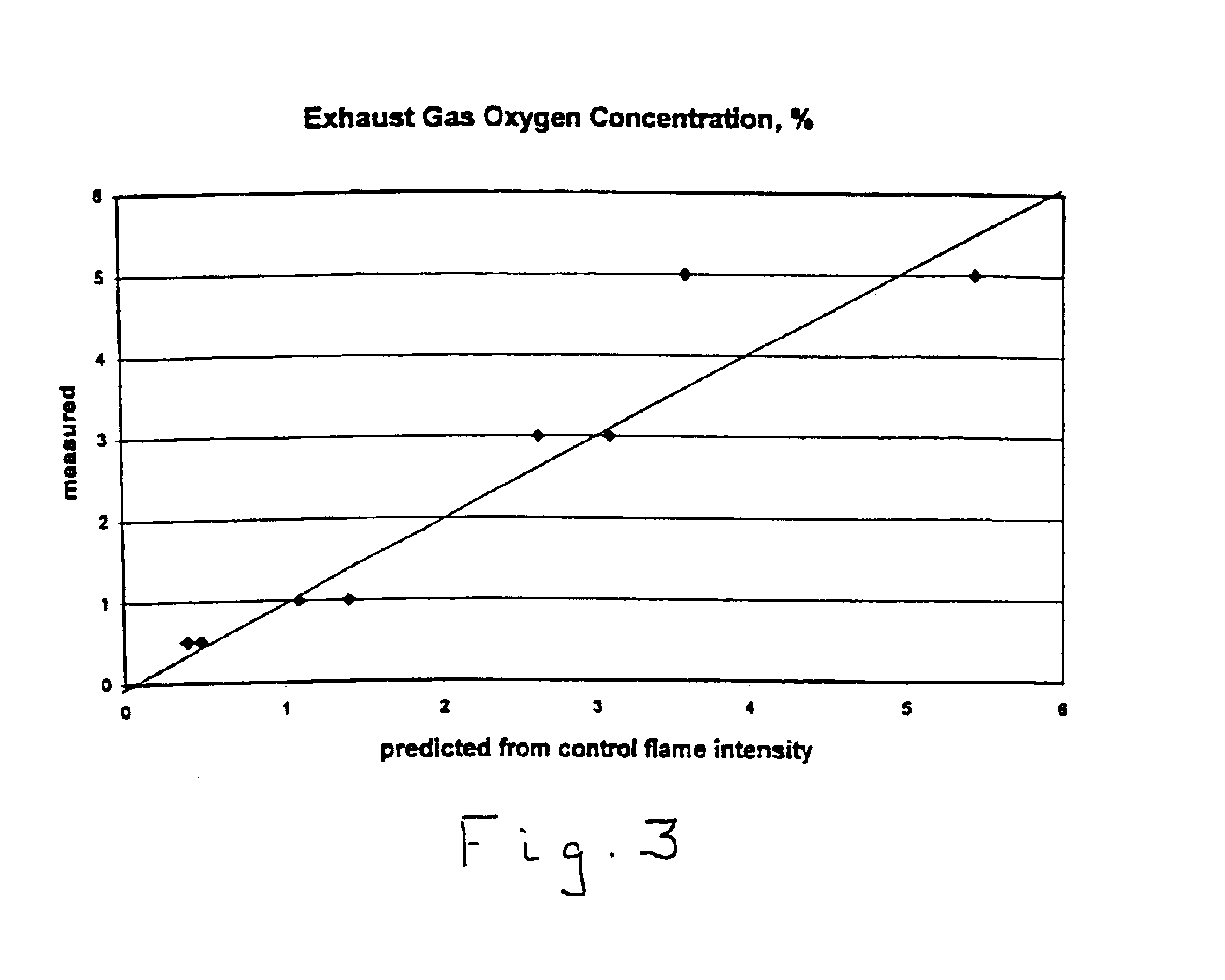Method for measuring concentrations of gases and vapors using controlled flames
a technology of controlled flames and concentrations, which is applied in the direction of material heat development, optical radiation measurement, instruments, etc., can solve the problems of not being rugged, low-cost or reliable enough to provide input to combustion control systems, and not being able to meet the requirements of control applications,
- Summary
- Abstract
- Description
- Claims
- Application Information
AI Technical Summary
Benefits of technology
Problems solved by technology
Method used
Image
Examples
Embodiment Construction
The concentrations of oxygen and other gases and vapors in a gas mixture in accordance with the method of this invention are determined by making optical measurements of narrow spectral bands in a controlled sensor flame placed in the gas mixture. As used herein, the term "narrow spectral band" refers to light wavelength ranges of less than about 20 nanometers, and preferably less than 10 nanometers, in width. The observed optical bands correspond to excited energy levels of various radical species including, but not limited to, O--H, C--H, and C--C, that are located in the ultraviolet and visible regions of the spectrum. Measurements of other characteristics of the controlled sensor flame, including temperature near or in the flame, flame length, flame shape, etc. may also be made along with the intensities of narrow spectral band optical readings to assist in determining oxygen concentrations. The information collected from the controlled sensor flame is input to software that cal...
PUM
| Property | Measurement | Unit |
|---|---|---|
| wavelength | aaaaa | aaaaa |
| wavelength | aaaaa | aaaaa |
| volume percent | aaaaa | aaaaa |
Abstract
Description
Claims
Application Information
 Login to View More
Login to View More - R&D
- Intellectual Property
- Life Sciences
- Materials
- Tech Scout
- Unparalleled Data Quality
- Higher Quality Content
- 60% Fewer Hallucinations
Browse by: Latest US Patents, China's latest patents, Technical Efficacy Thesaurus, Application Domain, Technology Topic, Popular Technical Reports.
© 2025 PatSnap. All rights reserved.Legal|Privacy policy|Modern Slavery Act Transparency Statement|Sitemap|About US| Contact US: help@patsnap.com



